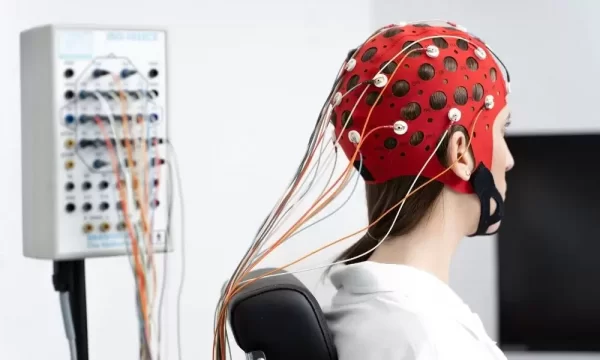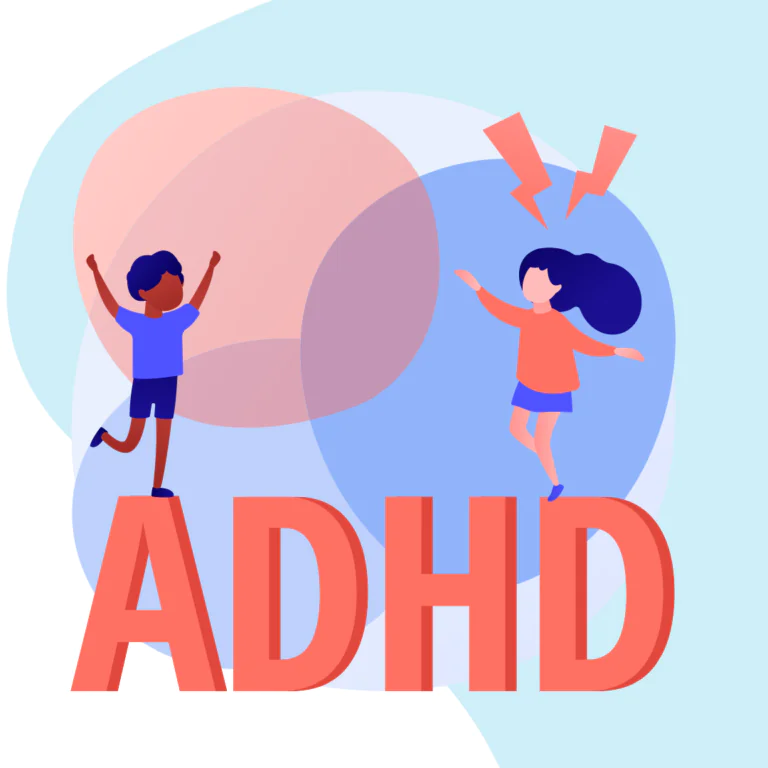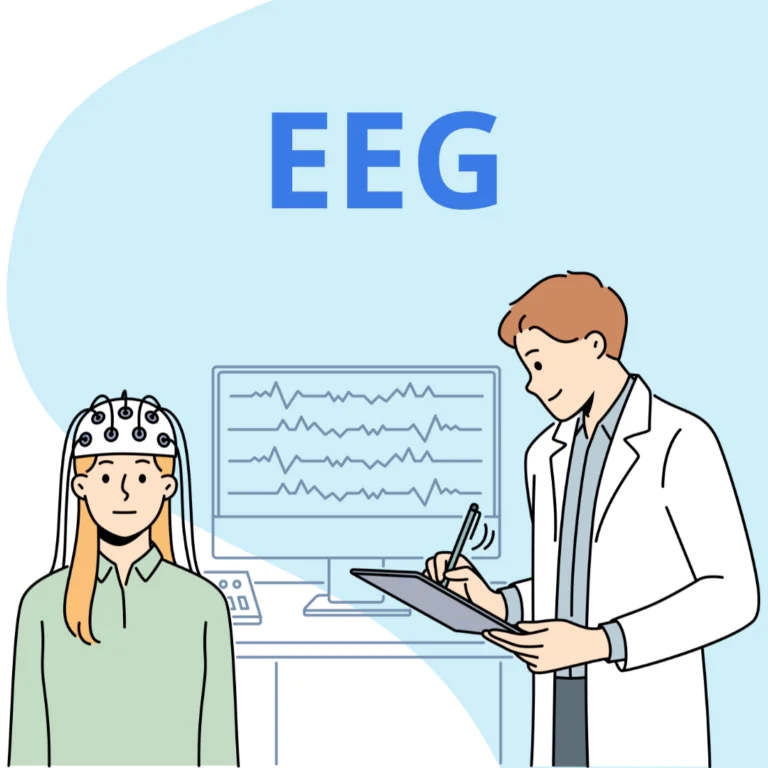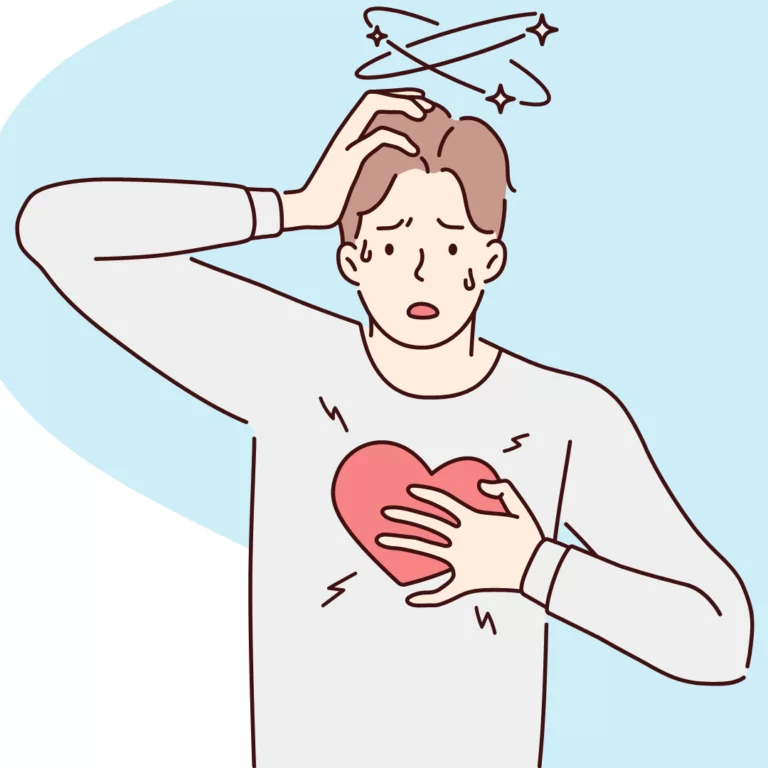The EEG is an important, if not the most important test in the diagnosis of epilepsy, which allows us to see a more complete picture of a patient and their complaints. But it is important to remember that, although valuable and very helpful, electroencephalography does not make the diagnosis for the doctor, but only helps resolve doubts. That is why it is so important who, where and how will perform the test for the patient.
Table of contents
What is an EEG?
EEG (electroencephalogram) is one of the tests performed to diagnose epilepsy and involves checking the bioelectrical activity of the brain. Neurons in our brain are constantly working, sending electrical impulses between each other, resulting in an electrical current running through the brain in different directions. This electrical activity of the brain is recorded by an EEG test. During the test, an electroencephalograph measures the voltage between the electrodes, amplifies it and draws it as continuous sinusoidal lines, based on which a specialist assesses whether the brain functions properly.
In a patient with epilepsy, discharges in the brain occur rapidly, with much greater force and frequency than normal activity. From the EEG recording, the epileptologist can also deduce whether the seizures are generalized or focal, and if they are focal, in what part of the brain they begin.
What does an EEG look like?
Electroencephalography is a completely non-invasive and painless test. The measurement is made with the help of electrodes placed in appropriate places on the head, which will record changes in electrical potential originating from the activity of neurons in the cerebral cortex. For the test to be as reliable as possible, the electrodes must be evenly placed on the patient’s head in the right places (in the so-called international “10-20” system), so as to form a kind of a special cap, which is put on the patient’s head. For the quality of the examination, it is important that the electrodes adhere as closely as possible to the scalp. The examination itself lasts about 20-30 minutes. Immediately after the test the patient can return to their normal activities.
Correct interpretation of EEG recording. The role of the diagnostician.
Electroencephalography is an invaluable tool for testing brain function, but it is important to remember that its meaning is supportive, not conclusive. The epileptologist should order it only after a medical interview has given him a strong basis for suspecting epilepsy, and the test itself is meant to confirm the epilepsy and its type. The electroencephalograph does not make the diagnosis for the doctor, but it does help resolve doubts.
According to Piotr Zwoliński, M.D., the EEG is an examination in which abnormalities are something to be expected, unless they are clearly recurrent and we are certain of this. Building a particularly wrong diagnosis on a single incident, one small abnormality observed once in the EEG recording, is a big mistake, unfortunately often observed in the diagnosis of epilepsy.
The golden rule which Dr. Zwolinski follows when interpreting the test results is that the EEG is an extremely sensitive and equally non-specific test. In addition, in case of many completely healthy people, the EEG will show an abnormal recording. At the same time, there are many people with a severe form of epilepsy who have a complete normalization of the recording between seizures, without any signs of abnormality.
Therefore, the interpretation of the EEG result always relates to the individual patient, the clinical situation, and is considered in conjunction with other tests that have been performed, and only then conclusions are drawn. This means that the correct interpretation of the EEG result depends on the diagnostician, the more experienced the better. Because EEG is a brilliant test, but only in the hands of someone who knows how to analyze it correctly.
And this experience is crucial when analyzing the results. In order to be recognized by the Polish Society of Clinical Neurophysiology as a specialist in the field, you need to analyze thousands of EEG results. To put it colloquially: you must be familiar with the subject. Piotr Zwolinski, PhD, holds a doctorate in EEG, including innovative digital methods of this form of diagnostics, and also specializes in the so-called brain mapping. The EEG lab at Neurosphera has two advanced digital machines and extensive expertise in examining patients of all ages and conditions. But most importantly, EEG testing is performed here with an understanding of the entire neurophysiological background, which is necessary to properly interpret the test result.

Videometric EEG
Although the EEG recording is a valuable guide in the diagnosis of epilepsy, no test can replace the knowledge and experience of the doctor. To make a correct diagnosis, the epileptologist must know what happens to the patient during seizures. All details are important: in which direction the patient turns his head, in which direction the eyeballs point, where the seizures occur, etc. Videometric EEG allows the doctor to see the patient at the crucial moment for the diagnosis of the disease. The examination is carried out in a specially prepared laboratory. The patient is permanently connected to the electroencephalograph, we turn on the camera and wait for an epileptic seizure. Sometimes it is necessary to wait a few days, but when the seizure occurs, the doctor receives the most complete information possible – a record of the brain discharges synchronised with the patient’s reactions. However, there are critics of provoking seizures for diagnostic purposes because such seizures are usually more extensive and more violent than those that occur spontaneously. However, if the test results are interpreted by an experienced physician, we gain insight into the subtle details of the seizure correlated second by second with the EEG recording.
EEG of children asleep. Controversies around the study
In Poland, performing an EEG during sleep to diagnose epilepsy in children is a common practice. This is mainly due to the convenience of such a solution: the child is asleep, hence calm and does not put up resistance during the insertion of electrodes. However, this is not about nocturnal sleep, the natural, physiological one for the patient. For organisational reasons (working hours of the EEG laboratory), the test cannot be performed at night, so the parents are asked to keep the child awake until the time of the test, which sometimes means even dozens of hours without sleep. Doctor Piotr Zwoliński is a firm opponent of this method. In order to render a child sleepy during the day, the so-called sleep deprivation is applied, which simply means forcing the child to sleep, waking it up several or more times a day. Apart from the obvious inconvenience, sleep deprivation is an extremely powerful factor in triggering a seizure. Under unnatural conditions, the unnatural behaviour of the brain is provoked.
In Neurosphera, the EEG examination in children is performed under unprovoked conditions. The child does not need to be prepared in any special way, he or she simply comes with a parent at the appointed time. We have a well-trained, experienced technician who is excellent with children of different ages and of different health conditions. The examination done while the child is awake is informative enough for Neurosphera specialists.
How the EEG examination in Neurosphera is conducted?
In Neurosphera, the EEG examination is conducted in a modern, completely unburdening for the patient way. There are no prerequisites, no preparations, no orders, such as sticking to the diet or washing the head with special liquids, no prohibitions. The only condition is the presence of the patient. The standard examination is performed in wakefulness because it is adequately illustrative and allows an experienced diagnostician to analyse the result well. Sleep recording is much more misleading because in sleep there occur physiological elements confusingly resembling acute elements, which may be misinterpreted as epileptic discharges.
Of course, if there is a special clinical indication, the way the EEG is carried out is modified and and the examination is done, for instance, at a special time, for a longer period or under special conditions. This applies, for example, to the suspected reflex epilepsy provoked by a stimulus. In this case, such a stimulus will be introduced into the study because otherwise the seizure would not occur. If the patient reports having seizures at a fixed time during the night, e.g., one hour after falling asleep, the patient will be observed during this particular period of time, which means that the examination will be performed while the patient is asleep. In this situation the videometric method of examination is used.
Can a normal EEG result rule out epilepsy?
Just as it is impossible to confirm a disease, it is also impossible to rule out epilepsy on the basis of an EEG recording alone. The electrodes that capture the brain waves are separated from the brain by hair, skin, skull and the meninges; therefore, they do not always register feeble epileptic discharges. This is particularly the case if the small focus is located in deep brain structures, such as the frontal lobe. This leads to a paradoxical situation: the electroencephalograph registers normal brain activity and the epileptologist watching the patient has no doubt that they are looking at an epileptic seizure. Additionally, in some types of epilepsy, brain functions normalise between seizures, and the EEG examination does not show any pathology. It is believed that an interictal study shows abnormalities in about 40% of patients with clinically diagnosed epilepsy. If the test is repeated several times, this percentage increases to 60%.
Is EEG examination harmful?
The electroencephalographic examination is absolutely harmless, and, therefore, can be repeated several times. The EEG examination is used by Neurosphera not only to diagnose epilepsy, but also to recommend it during the treatment. It allows us to observe whether the recording has changed under the influence of the therapy or whether the brain activity has been modified under the influence of medications. The EEG is an extremely useful tool, but it cannot replace a clinical examination by an experienced epileptologist. Please, bear in mind that after you register in our Neuroterminal system, you can freely sign for for consultation, appointment, as well as EEG examination in our Neurosphera Epilepsy Therapy Center!




